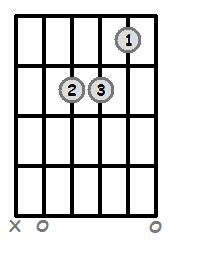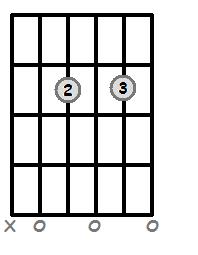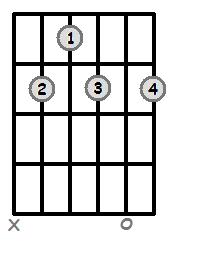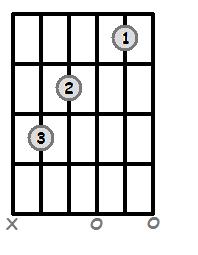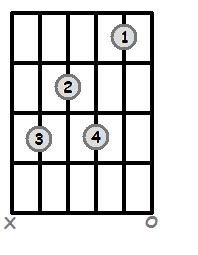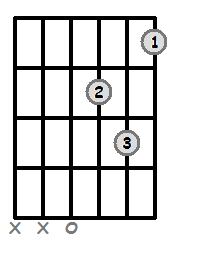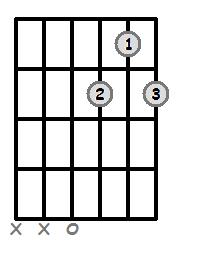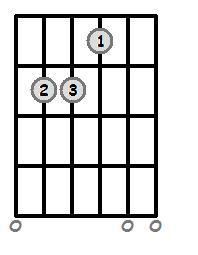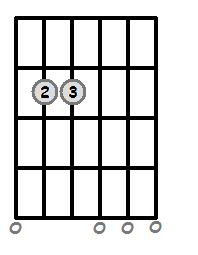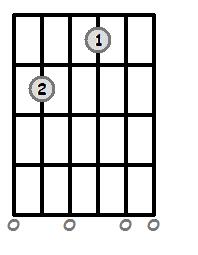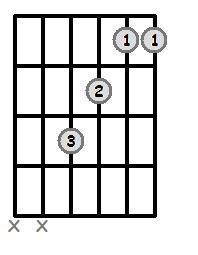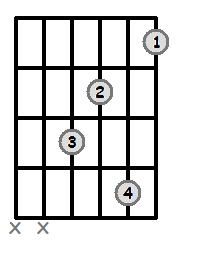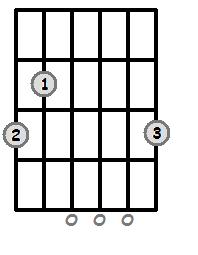Learning chords all over the neck of the guitar is an endless pursuit and can take a life time to master. There is almost an infinite amount of voicings, combinations etc that can be constructed to produce chords.
Luckily, if you are starting out, you can get by with only a few chords. Of course the time will come when you will no doubt want to branch out and learn some more, but I would say that 90 percent of songs in the mainstream use about 10 percent of chords available, which means that you should focus on learning the main ones to start with.
A chord is simply 3 or more notes played in unison. We achieve this on the guitar typically by gripping a shape with our left hand and strumming with our right hand.
Chords can be loosely divided into 2 categories:
Movable chords and open chords.
Movable chords are chords that contain no open string and can therefor be moved up and down the neck. For now, we will focus on open chords. Open chords are chords that contain at least one open string and are generally easier to get the hang of.
16 Open Chords
There are only 16 open chords that I would consider to be the ‘main’ ones. These are basically all the minor, Major and dominant 7 chords that can be played in the open position. Don’t worry too much about what those names actually mean. The theory behind it can be learned pretty easily down the track.
Here they are. Just to clarify, there are 3 types of chords in the list, Major, Minor and Dominant 7.
Guitarists generally like to abbreviate things as much as possible. Major is the default chord. Therefor, if you were to say, “I am playing a C chord”, you are actually saying, “I am playing a C Major chord” and vice versa. Minor usually gets abbreviated to a lower case m, so you will often see (for example) D minor written as Dm. Dominant 7 gets abbreviated to 7, so you will often see (for example) F Dominant 7 written as F7. With that in mind, here are the main 16 open chords:
A Major
Click here for more A Major chord shapes.
A Minor Chord
Click here for more A minor chord shapes.
A7 Chord
Click here for more A7 chord shapes.
B7 Chord
Click here for more B7 chord shapes.
C Major Chord
Click here for more C Major chord shapes.
C7 Chord
Click here for more C7 chord shapes.
D Major Chord
Click here for more D Major chord shapes.
D Minor Chord
Click here for more D minor chord shapes.
D7 Chord
Click here for more D7 chord shapes.
E Major Chord
Click here for more E Major chord shapes.
E Minor Chord
Click here for more E minor chord shapes.
E Minor Chord
Click here for more E minor chord shapes.
F Major Chord
Click here for more F Major chord shapes.
F7 Chord
Click here for more F7 Chord Shapes.
G Chord
Click here for more F Major chord shapes.
G7 Chord
Click here for more G7 Chord Shapes.
It should be pointed out that technically F and F7 do not have any open strings in them. I have included them in the list because they are played in the first few frets and F major is a very common chord. F is probably the hardest ‘open chord’ to get used to for beginners. It should also be pointed out that this is by no means an official list and there are variations that are possible with a lot of the above chords. There are also other types of chords that aren’t included in this list because they are not as common but are technically open chords. If we included minor 7 chords or suspended 4 chords (for example) the list would be much larger.
There are literally thousands of great songs that can be played with just 3 chords. If you can get comfortable with the above 16, you will obviously have a lot of songs that you can potentially play. The hardest thing to master when starting out however, is feeling comfortable with each shape and then being able to move from one chord to another, seamlessly. This does take time and happens at different speeds for different people. So be patient and try to get the finger muscles working every day. The best approach is to take only a few of the chords and practice those. For example, learn A, D and E and practice moving between them. Of course, there’s no harm in having a go at the others and it might serve only as a good introduction to them once you decide to start practicing the remaining shapes, but try to get a bit of momentum and confidence with just a few chords before you launch seriously into the rest.
Once you feel comfortable playing a few of these basic chords, you will need to know how use them while strumming.

